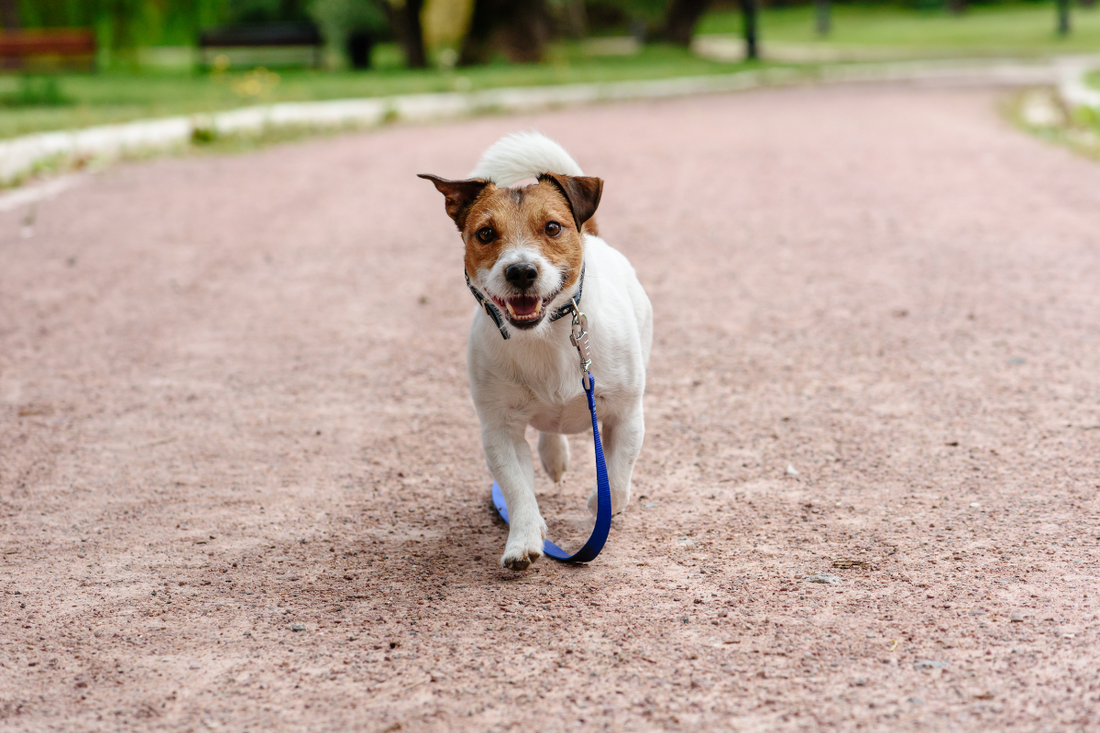How to Train Your Dog with a Harness: A Step-by-Step Guide from Experts!

Every day, pet parents are choosing to use harnesses for their dogs. There are so many fantastic reasons to switch to a harness if you’ve been using a collar and leash to walk your pup. Harnesses are safer for them– and for you. Harnesses protect their necks and tracheas and prevent pulling, all of which make it easier for them to breathe. Harnesses with a handle mean that you can quickly and safely grab your pup if a situation starts to get out of hand– or if they need a boost up the stairs, or help getting into the car.
But you can’t just put a harness on your dog and expect them to be happy about it the first time. A harness is a new experience, and they need a little help figuring it out! That’s where training comes in. Training doesn’t just help your dog understand how to move in the harness; it helps them feel more comfortable and confident about new things. Here’s how you can train your dog with a harness in just a few easy steps!
Step 1: Choosing the Right Harness

Selecting the right harness is crucial for successful training.
Opt for a well-fitting harness that is appropriate for your dog's size, breed, and body shape. There are various types of harnesses, including back-clip, front-clip, and no-pull harnesses. You want a harness with good safety features, too– look for easy-on, easy-off harnesses with reflective strips that ensure your dog is always visible.
The right harness fits well. You want it to be snug, but not too tight. You should be able to fit two fingers between the harness and your dog's body. Adjust the straps accordingly to prevent chafing or discomfort. Your dog’s harness may have neck straps, shoulder or chest straps, and/or a belly strap. Each strap should be adjusted for the optimal fit.
Step 2: Familiarization and Positive Associations

Before putting the harness on your dog, let them sniff and explore it. This helps them associate the harness with positive experiences.
Hold the harness near your dog, letting them see and smell it. Have some treats on hand for this next step. While your dog is in a good mood, slowly drape the harness over their back without fastening it.
Reward your dog with treats, praise, and gentle petting whenever they show interest in the harness. This step helps alleviate any initial anxiety or resistance. Once your dog is comfortable with the idea of the harness, it’s time to start getting them ready to wear it.
Step 3: Harness Associate with Fun Activities

Associate the harness with enjoyable activities, like going for walks, playing fetch, or receiving treats. This will further reinforce positive associations with wearing the harness.
For now, don’t worry too much about actual training, like basic commands– you just want the harness to be a fun thing that’s associated with play. At this stage, you will likely start to see that your dog will get excited when the harness comes out. That’s what you want to see! It means they are building a positive association.
Step 4: Practice Makes Perfect

Before heading outside, ensure your dog is familiar with basic commands like "sit," "stay," and "come."
Practice these commands indoors while your dog is wearing the harness. Introduce the leash indoors as well, letting your dog drag it around to get used to the sensation. You can even take practice walks! Start indoors or in a fenced area to help your dog adjust to the harness and leash. Reward your dog for walking beside you without pulling. Use treats and verbal praise to encourage good behavior.
As your dog becomes more comfortable with the harness and leash indoors, venture outdoors for short walks in a quiet and familiar environment. Be patient and allow your dog to explore at their own pace. Reward them for staying by your side and remaining calm.
Step 5: Consistency and Patience

Consistency is key in dog training. Practice regularly and be patient with your dog's progress. Celebrate even small achievements and continue to use positive reinforcement to build a strong bond with your furry bestie.
As your training progresses, introduce distractions gradually. These could include other dogs, people, or new environments. Use high-value treats to keep your dog's attention on you and reinforce positive behavior.
Make Every Walk A Joyride!
Training your dog with a harness is a rewarding endeavor that enhances your dog's safety, comfort, and overall well-being. When you choose a harness designed for your dog’s comfort and safety like the Joyride Harness, the first step is already done for you.
Check out the perfect fit of the Joyride Harness and see why thousands of dog lovers just like you swear by it for their beloved furbabies!





















